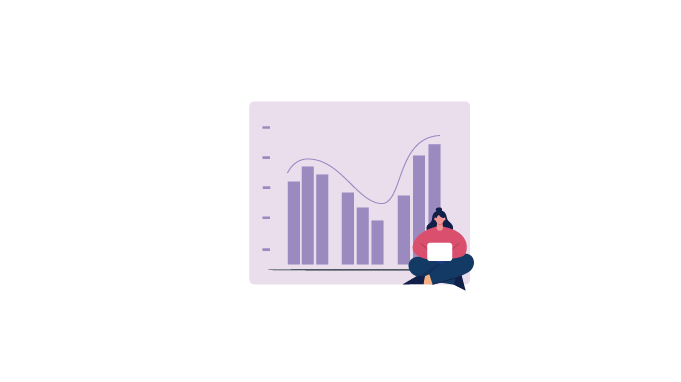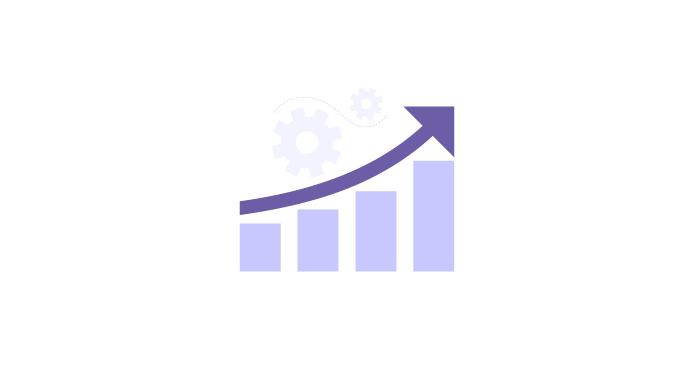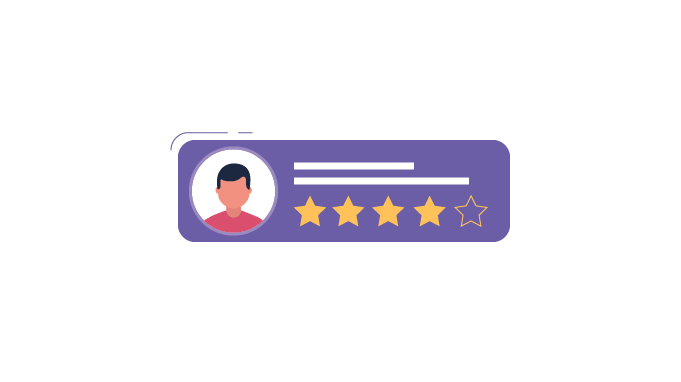19 Best Employee Engagement KPI You Need To Know In 2024
Employee engagement has become an integral part of people first work culture. It is directly proportional to the organization's prosperity, regardless of the type of industry you are involved in. By now, the leaders are well aware of the vital role engagement plays in the success of a business. Using employee engagement KPIs is now integral to measuring your organization's engagement level.
What Is An Employee Engagement KPI?
Employee Engagement Key Performance Indicator (KPI) is a tool used to measure the engagement and its impact on the business. KPIs provide a Comprehensive picture of the progress or digression in the engagement of a workplace that is essential for the growth of the business.
Business leaders have been using various employee engagement metrics to assess the level of engagement in their organization and improve upon it. These KPIs keep them updated with the current status of their employees and the impact it has on the business.
Why Is There A Need To Measure Employee Engagement?

As we have already established, employee engagement is integral to your company's success. The benefits an engaged workforce brings are hard to ignore. It:
- Boosts employee performance
- Improves employee retention
- Supports and influence company goals
- Gives clear, measurable improvement data
- Helps with better business understanding
All this, along with several other reasons, makes measuring employee development the need of the hour.
19 Employee Engagement KPIs You Need To Know
Let us look at the list of a few indicators that will help your organization keep track of the level of engagement in your organization.
Employee NPS

The Net Promoter Score is a metric developed in 1993 by Fred Reichheld and later adopted in 2003 by Bain & Company and Satmetrix to predict customer satisfaction and referral. The one question they found worked best for most competitive industries was:
How likely are you to recommend company x to a friend or colleague?
In a nutshell, you can use this direct question to gauge the satisfaction of your customers and how likely your employees are to recommend their organization as the place to be.
You can calculate the employee net promoter score by using the following formula.
Employee NPS= (promoter- detractor)/total respondents
Turnover Rate
Employee turnover rate is an important KPI as it indicates the satisfaction of the employees and the likelihood of them remaining as a part of the company.
This is only sometimes uniform across all departments and teams of the organization. By maintaining a steady turnover rate, an organization can focus more on specific departments that need attention, especially if employees feel disengaged.
The formula used to calculate the turnover rate is:
Turnover rate = (Total number of employees who have left the organization) / (Total number of employees at the beginning of the period)
On average, every year, a company will experience 18% turnover in its workforce. According to market research, the recommended turnover rate is 10% or less annually.
Successful Hires After Trial Period

This indicator shows us the percentage of people who stay with the organization after the trial period. Suppose new hires leave the organization during or close to probation. In that case, it can mean that the company needed to integrate them or that they were not the right fit for the company.
This indicator is influenced by various factors like:
- The average time required to find a hire
- Applicants interviewed per hire
- The rate of acceptance
- The percentage of job applicants who meet the job standards
- Satisfaction with the hiring process
- Evaluating the performance of new hires
Internal Promotion Rate
Internal promotion rate reveals an organization's ability to retain and develop its top talents. Since an opportunity for growth is one factor that attracts recruits, it also makes for an important employee engagement KPI.
Internal promotion rate can be calculated by:
Internal Promotion Rate= Number of employees promoted/ Total number of employees
Read our blog on: Employee Promotion: The Types, Benefits, & Whom to Promote
Cost per Hire

Cost per hire is a crucial KPI to calculate the capital invested in acquiring new talent. It especially comes into play when allocating a recruitment budget.
Cost per hire formula:
Cost per hire =(Internal Recruiting Costs+External Recruiting Costs)/Total Number of Hires
Depending on your company size and the positions you're looking to fill, a good cost-per-hire range is between $3,000 and $5,000.
Use our extensive Cost per hire calculator to check yours.
Employee Satisfaction Index
The employee satisfaction index establishes a link between overall employee satisfaction and customer experience. However, unlike eNPS, the rating for ESI depends on more than one question, but they are still answerable on a scale of 1 to 10.
Employee surveys are a very helpful tool for measuring employee happiness.
Regular Performance Evaluation

The work performance of an employee is an essential parameter when it comes to evaluating them. This evaluation plays an important role in their development. Feedback given to the employees at the right time can help their growth in the correct direction.
Employee Surveys are an ideal tool to assess employee performance at regular intervals. This feedback not only helps the employee's growth but also indicates that the company is involved in the development of its employees.
Company Ratings
A company review is just as important as a product review. Afterall, who knows their employers better than their employees? These ratings are helpful when it comes to determining the best places to work based on real reviews by employees.
There are several company review sites that you can refer to monitor your employee brand, like:
- Glassdoor
- Indeed
- Fairygodboss
- InHerSight
- Comparably and many more.
Positive reviews in such company review websites help build your brand and attract employees, giving job applicants a clearer picture of what they can expect before joining.
Employee Suggestion Box

Regarding employee feedback, the suggestion box is one of the oldest forms. The employee suggestion box allows the employees to put forth their opinions before the management. The best part about such a suggestion box is that it is anonymous, which gives the employees greater freedom to express their thoughts.
Considering your employees' suggestions will show them they are valued and their words matter.
Productivity Rate Of Employees
The productivity rate of employees is another important employee engagement KPI as an engaged workforce is usually productive.
Engagement plays an important role in increasing the productivity rate of a workforce.
Gallup's report on employee engagement shows that companies with a highly engaged workforce have 21% higher profitability. They also have 17% higher productivity than companies with a disengaged workforce.
To calculate employee productivity rate you can use the following formula:
Productivity rate of employees= Total revenue of the company/total number of employees
Absenteeism

Running an organization is not a one-man job. It takes an entire team for smooth operation and progress. Absenteeism becomes a major issue in this case as it is not just the individual affected by their absence but the team members.
If your employees do not show up for work, it creates a major roadblock for the team. If one team member falls behind, your entire team will have to pick up the slack resulting in a reduced employee experience.
Absenteeism rate= (total number of absent days per employee/ total number of working days)x 100
Use Of Vacation Days
Taking time off isn't a valid employee engagement KPI. However, it is a very insightful indicator of your company culture as it indicates a healthy work-life balance. A healthy work-life balance promotes employee engagement. And as we have already established, an engaged workforce is productive and works effectively.
Ensure your employees are comfortable using their vacation days, which is a good indicator of positive company culture. It indicates a culture where employees are not overburdened or feel no one will have their back if they take a day off.
Client Satisfaction

To satisfy the clients, the employees need to be happy. This KPI takes into account the same logic. If customer satisfaction is low, consider figuring out your employees' satisfaction level. This will establish a clear picture of whether your employees' satisfaction is hampering the overall happiness of the clients.
To achieve excellent customer service your employees need to be eager to work. This eagerness can only be seen if the job is right for them. Remember that employee engagement is the key to achieving employee satisfaction.
Read our blog on: How Employee Satisfaction can lead to Customer Satisfaction
Retirement Rate And Average Age Of Retirement
Evaluation of the retirement rate is crucial for every organization building up a strategic workforce plan. The retiring employees need to be replaced seamlessly for the smooth working of the organization.
This is where being aware of the average age of retirement is helpful. It is calculated by the estimated age of all the employees retiring divided by the number of employees retiring. Being forewarned about the nearing retirement age of the employees makes it easier for the organization to prepare for their replacement in advance.
Healthcare Cost Of Employees

One of the important aspects of a human being is their overall mental and physical health. This is essential for the current employees as they like to hustle. When they are sound both physically and mentally, it enables them to perform at their peak. This has led us to our next KPI, which is the healthcare cost of an organization.
The cost of employee healthcare gives us a clear picture of the elements of an organization's healthcare plan.
Healthcare cost = (Total number of healthcare costs/ Total number of employees)
To see if an organization values each employee all you need to do is look at how much the company is spending on its employees’ healthcare. The more an employee is willing to spend, the more the company cares. Healthcare benefit is also an attractive incentive for new joiners and good for retention.
Salary Competitiveness Ratio
In the fast-paced world today, Competitiveness is a part of everyday life. The scale of pay is an important factor in every life that plays such an important role in one's lifestyle that one cannot attempt to escape it.
SCR, or Salary Competitiveness Ratio, is used to evaluate the Competitiveness of compensation provided by different companies.
Salary Competitiveness Ratio = (the company's average salary / the average salary offered by competitors in the industry)
Return Of Investment

Every organization wants to invest with a return in sight. The training the company puts into its employees is in the expectation of returns. These returns can be in the form of an increase in productivity, enhanced profits, better client satisfaction, etc. The ROI is determined by:
ROI = (profit per dollar invested in social compensations/ wages)
Rate Of Attrition
This KPI evaluates the retention rate of the company. It helps determine the success of an organization in retaining talent. It is calculated by:
Rate of Attrition =(total number of employees who have left the organization in a given period / the average number of employees in that particular period)
A high retention rate is indicative of a positive company culture that is more likely to promote engagement.
Diversity And Inclusion

Diversity is an indication of the company culture. The greater the diversity in the organization, the better its culture. It indicates an inclusive work environment that is accepting of different gender, race, and ethnicity which is a necessary measure of engagement.


















